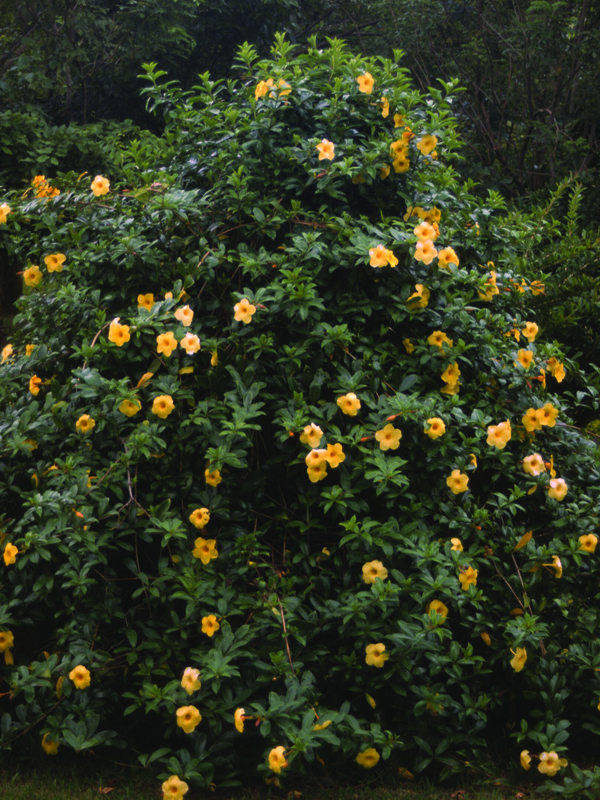| General Description | A tropical evergreen shrub with clusters of yellow, trumpet-shaped flowers. |
| Shape | Shrubby habit. |
| Landscape | Grown as a hedge in tropical areas, or as a container plant (although can be difficult, due to it's large size). |
| Propagation | Propagate by soft stem tip cuttings. |
| Cultivation | Grow in full sun in a rich, well-drained soil. Removing spent flowers will promote greater bloom. |
| Pests | Scale, mealy bugs and leaf spot may occur, and red spider mites and whitefly can cause problems for indoor specimens. |
| Notable Specimens | Villa St. Lucia, Tagaytay, Phillippines. |
| Leaf Description | Leathery, dull green leaves, to 10 cm in length, appearing in whorls of 3-5 along the stem. |
| Flower Description | Yellow, trumpet-shaped flowers with orange-red throat stripes. Freely blooms throughout summer to first frost. |
| Fruit Description | Fruit is prickly and burlike, which is sometimes used in floral arrangements. |
